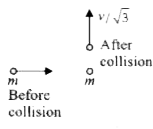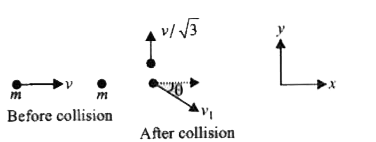A
B
C
D
Text Solution
Verified by Experts
The correct Answer is:
|
Topper's Solved these Questions
WORK, ENERGY AND POWER
MTG GUIDE|Exercise CHECK YOUR NEET VITALS|25 VideosView PlaylistWORK, ENERGY AND POWER
MTG GUIDE|Exercise AIPMT/NEET (MCQs)|34 VideosView PlaylistWORK, ENERGY AND POWER
MTG GUIDE|Exercise NEET CAFE (TOPICWISE PRACTICE QUESTIONS) (MOTIN IN A VERTICAL CIRCLE)|7 VideosView PlaylistTHERMODYNAMICS
MTG GUIDE|Exercise AIPMT/NEET (MCQs)|26 VideosView Playlist
Similar Questions
Explore conceptually related problems
Knowledge Check
A
B
C
D
Submit
A
B
C
D
Submit
A
B
C
D
Submit
Similar Questions
Explore conceptually related problems
MTG GUIDE-WORK, ENERGY AND POWER-NEET CAFE (TOPICWISE PRACTICE QUESTIONS) (COLLISIONS)
- A light particle moving horizontally with a speed of 12 m/s strikes a ...
Text Solution
|
Play - A 10 kg object collides with a stationary 5 kg object and after collis...
Text Solution
|
Play - Two particles having position vectors vec(r1) = (3hati +5hatj) m and v...
Text Solution
|
Play - Three identical spherical balls A, B and C are placed on a table as sh...
Text Solution
|
Play - Which of the following statements is correct?
Text Solution
|
Play - A block of mass 0.50 kg is moving with a speed of 2.00 m s^(-1) on a s...
Text Solution
|
Play - If two bodies stick together after collision and move as a single body...
Text Solution
|
Play - The first ball of mass m moving with a velocity u collides head on wit...
Text Solution
|
Play - Ball 1 collides with an another identical ball 2 at rest as shown in f...
Text Solution
|
Play - A metal ball of mass 2 kg moving with speed of 36 km h^(-1) has a head...
Text Solution
|
Play - A 2 kg ball moving at 24 ms^(-1) undergoes head on collision with a 4 ...
Text Solution
|
Play - A particle of mass m moving towards the east with speed v collides wit...
Text Solution
|
Play - A mass m moves with a velocity v and collides inelastically with anoth...
Text Solution
|
Playing Now - A glass marble dropped from a certain height above the horizontal surf...
Text Solution
|
Play - Two identical mass M moving with velocity u1 and u2 collide perfectly ...
Text Solution
|
Play - In elastic collision
Text Solution
|
Play - A car of mass 400 kg and travelling at 72 km h^(-1) crashes into a tru...
Text Solution
|
Play - A spherical ball A of mass 4 kg, moving along a straight line strikes ...
Text Solution
|
Play - A bullet of mass in travelling with a speed v hits a block of mass M i...
Text Solution
|
Play - A body of mass 1.0 kg strikes elastically with another body at rest an...
Text Solution
|
Play

